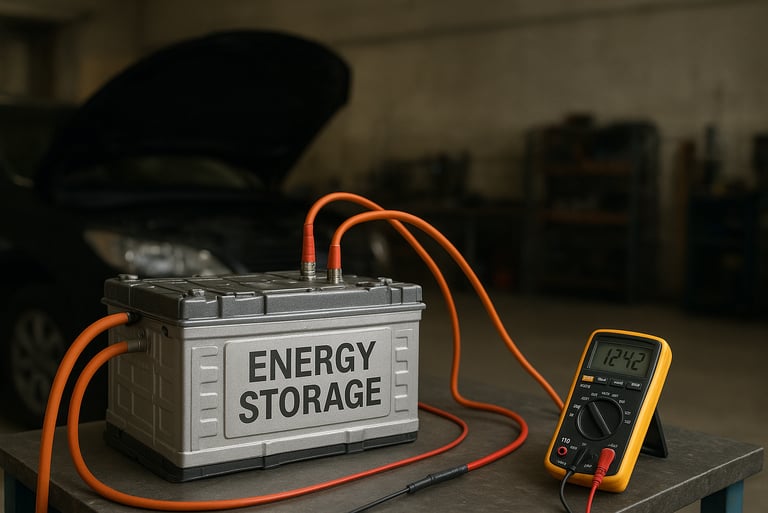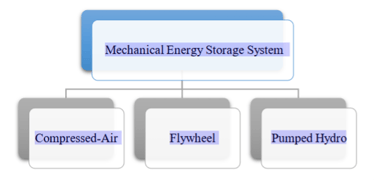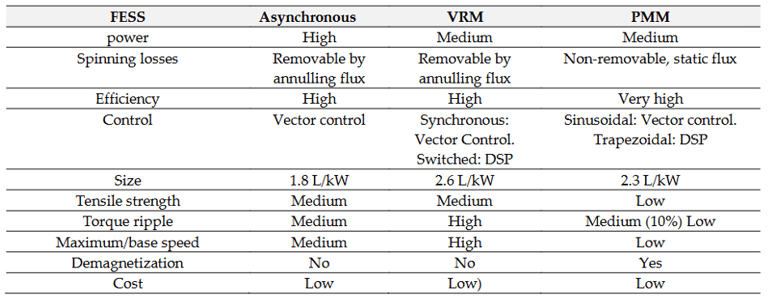Harnessing Physics – Mechanical Storage, Future Frontiers & Collaborative Pathways
In the first part of this series, we explored the critical role of chemical and thermal energy storage, highlighting how innovations like flow batteries and molten salt systems are addressing the need for long-duration grid reserves. While these solutions are vital, the quest for a resilient, decarbonized grid requires a more diverse toolkit. For that, we turn to the fundamental laws of physics.
SUSTAINABLE TECHNOLOGIES
Aadesh Aslekar
8/26/20254 min read


Mechanical energy storage is a captivating field that harnesses physical forces to capture, hold, and release power. These technologies are often known for their immense scale, long lifespan, and ability to cycle energy with minimal degradation, making them powerful complements to chemical batteries. The mechanical energy storage systems (MESS) model can be purposefully designed to offer exceptional flexibility to smart PowerGrids in the intricate task of balancing energy resources and demand loads.
Mechanical energy storage systems (MESS) have grown in importance, considering recent CAES concepts and compressed air storage (CAS) options, meticulously assessing their merits and limitations.
The various types of Mechanical Energy Storage Systems (MESS) are based on their fundamental operational principles. They encompass Compressed-Air Energy Storage (CAES), Pumped Hydro Energy Storage Systems (PHS), and Flywheel Energy Storage Systems (FESS), as illustrated in Figure 1 below.


Figure 1: Classification of MESS
Compressed Air Energy Storage (CAES): This technology operates like a giant, rechargeable air tank. During times of low demand and abundant renewable generation, excess electricity is used to power a compressor, which forces air into a vast underground cavern, a salt dome, or an aquifer. When the grid needs power, the pressurized air is released, heated, and expanded through a turbine to generate electricity. While not a new concept, modern CAES systems are integrating advanced thermodynamics and thermal storage to improve efficiency, positioning them as a viable solution for multi-day, grid-scale storage where suitable geological formations are available. Two plants have been constructed worldwide so far, one in Germany and one in the USA, with turbine capacities of 390 MW and 110 MW, respectively.
Flywheel energy storage system (FESS): Flywheel energy storage system (FESS) takes advantage of the possibility to store electrical energy as kinetic energy. FESSs use electrical energy to accelerate or decelerate the flywheel; that is, the stored energy is transferred to or from the flywheel through an integrated motor/generator and power converter. The rotating speed of the flywheel determines the amount of energy stored. Figure 2 presents the most critical mechanical part of the FESS, which is the bearing. Table 1 provides a detailed discussion of the suitable FESS. The overall bearings of the FESS are divided into two types: (i) mechanical bearings and (ii) magnetic bearings. Mechanical bearings have been successfully applied for low-speed FESS. These mechanical bearings can have their drawbacks due to friction and require lubrication and maintenance. More particularly, the variable reluctance machine (VRM), the induction machine (IM), and the permanent magnet machine (PMM) are utilized by FESS.


Pumped-Hydro Storage (PHS): While a well-established technology, it’s worth acknowledging as the cornerstone of mechanical storage. Accounting for over 90% of global grid storage, PHS uses excess electricity to pump water from a lower reservoir to an upper one. The stored potential energy is released when needed by allowing the water to flow back down through a turbine. While geographically limited to sites with two reservoirs at different elevations, its proven reliability and long-duration capabilities make it the most common and powerful grid storage solution to date. PHS systems exhibit noteworthy efficiencies, typically falling within the range of 70% to 80%, with a customary capacity spanning from 1000.0 MW to 1500 MW. It’s worth noting that Europe boasts a cumulative PHS capacity of approximately 55.0 GW, whereas the global capacity stands at a substantial 170.0 GW.
Gravity Batteries (Gravitational Energy Storage): One of the most intuitive and visually striking concepts in storage is the gravity battery. These systems use excess renewable energy to lift heavy blocks or weights to a high elevation. When the energy is needed, the weights are slowly lowered, and the gravitational force spins a generator to produce electricity. The beauty of this approach lies in its simplicity, the use of low-cost materials (such as concrete), and a lifespan that can extend for decades with minimal maintenance. Companies are now building pilot plants, from small-scale deployments using warehouses to massive, purpose-built towers designed to store hundreds of megawatt-hours.
The future of energy storage is not about a single "silver bullet." It is about a rich, diverse portfolio of solutions tailored to specific needs—from short-burst grid balancing (often handled by lithium-ion) to long-duration, seasonal storage. Achieving a truly resilient and affordable grid requires us to deploy these technologies in a collaborative and integrated manner.
This is where the nexus of industry, academia, and policy becomes paramount. Researchers are working to optimize these systems, engineers are building and testing pilot projects, and policymakers are designing the incentives needed to accelerate their adoption. It is through this collaborative effort that we can ensure every watt of renewable energy is captured and utilized, transforming the promise of a decarbonized future into a tangible reality.
References:
1. Renewable energy and energy storage systems - ScienceDirect
3. Mechanical Energy Storage Systems: Compressed Air and Underground Pumped Hydro | Journal of Energy
7. Pumped hydro storage (PHS) - ScienceDirect
8. Existing and new arrangements of pumped-hydro storage plants - ScienceDirect
9. Prospects for pumped-hydro storage in Germany - ScienceDirect
11. Revolutionizing Renewable Energy Integration: The Innovative Gravity Energy Storage Solution


Fig 2: Mechanical Block Diagram of the FESS
Table 1: FESS Types and Specifications
Connect
info@energizetomorrowus.com
© 2025. All rights reserved.


